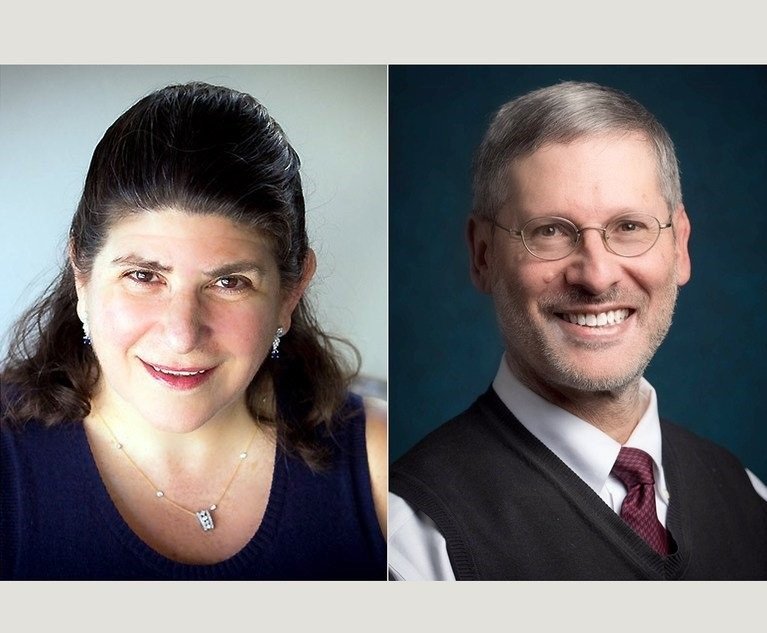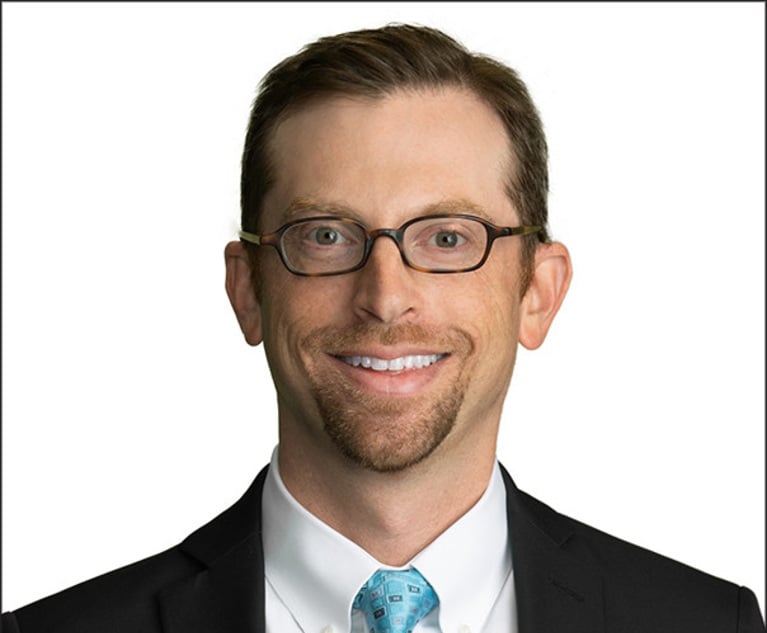 Elisa Reiter and Daniel Pollack
Elisa Reiter and Daniel PollackIt Takes a Community to Curb Child Abuse
This article discusses the laws and legislations surrounding child abuse, and how it may hinder or help minors in abusive households.
November 07, 2024 at 12:58 PM
6 minute read
Every state has had its particularly infamous child abuse case. In New York, it was Elisa Izquierdo. In Georgia, it was Terrell Peterson. The professional and societal reaction to these monstrous events was to immediately put ‘the system’ under a microscope. What went wrong? Who’s to blame? The courts? Child Protective Services? What policies and procedures should be changed? Was there inadequate funding? Some critics were quick to inundate the public with catch phrase answers such as the need for “strategic multi-agency development” and “best practices.”
While no one is advocating that these questions should not be asked and answered, the more important focus is the underlying context in which the abuse is taking place – the breakdown of community. Government is not a substitute for community any more than it is a substitute for family. Nor can the government build community.
Never has the world of instant gratification been more accessible. Hop onto the internet and whatever you want can be delivered to your doorstep, often within hours. While this short-term game works for products, such immediacy cannot be applied to fostering a sense of communal interpersonal responsibility. Just the opposite.
It is crucial to recognize that family court judges, despite their best efforts, cannot anticipate every need or scenario that may arise in a child’s life. This limitation underscores the importance of individuals stepping up to care for children in need within their communities. The legal system, while necessary, is not a panacea for all child welfare issues.
The question of whether one prior conviction of domestic violence merits legislation prohibiting a parent from seeing their children should be subject to strict scrutiny. Laws like Abrial’s Law, Piqui’s Law, and Kayden’s Law, while well-intentioned, have had varying impacts on the communities where such legislative reforms have been enacted. These laws, designed to protect children from abusive parents, have sparked debates about the need for balance between child safety and parental rights.
In communities where such legislation has been enacted, there have been both positive and negative consequences. While these laws aim to protect children, they may also serve to separate children from parents who have genuinely reformed or who were wrongly accused. The impact on families and communities can be profound, potentially leading to increased single-parent households, children in foster care, or individuals who are barred from serving as foster parents because of something that happened decades previously. It is self-evident that proponents of such legislation argue that these laws are mandated to prevent tragic outcomes, and to prioritize child safety above all other considerations.
Lenore Skenazy addresses the teeter-totter that is the balance between protecting children and allowing them independence: “A child who can fend for himself is a lot safer than one forever coddled, because the coddled child will not have Mom or Dad around all the time, even though that’s what they are counting on.” Overprotection of children may actually make them less safe in the long run. Skenazy’s philosophy challenges the notion that stringent protective measures always result in improved child safety, instead advocating for a more balanced approach that fosters resilience and self-reliance in children.
Do children want to be with an abusive parent? Sometimes, yes. Is it the job of court appointed advocates to communicate the child’s desires to the court? Yes. The debate around child custody evaluations and certain labels frequently attached to family court proceedings has become increasingly contentious in recent years. Some experts and advocates, like Joan Meier, argue for significant reforms to how courts handle allegations of abuse and alienation in custody cases. Parental alienation syndrome, so frequently asserted over the last 40 years, is suddenly being cast as the Voldemort of custody work – that “which should not be named.” However, Meier, and many others, simply note that no concept that lacks scientific validity, and which may in fact be misused, should be relied on regarding something as crucial as the best interests and safety of children.
Critics of current practices contend that child advocates and custody evaluators may lack proper training in domestic violence dynamics or may rely on discredited theories. Such critics contend that such issues may lead to unsafe custody outcomes involving abuse allegations. By contrast, proponents of maintaining the appointment of child advocates (ad litems, amicus attorneys, guardians ad litem) and custody evaluators argue that such professionals provide valuable insights to help judges make informed decisions in complex cases. Those proponents maintain that eliminating such roles entirely would deprive courts of important perspectives on children’s needs and family dynamics.
The push to reform family court practices reflects a broader debate about how to best protect children’s safety and wellbeing, while also respecting the constitutional due process to which a parent is entitled. Some jurisdictions have moved to implement new training requirements or guidelines for custody evaluators and for attorneys who are court appointed to represent children in order to address concerns about trauma-informed advocacy, bias, and/or insufficient expertise as to the impact of domestic violence. As the debate continues, many experts reflect the need for active listening to the voices of children, and the impact of children’s experiences. Some judges find value in speaking directly with children in appropriate cases, allowing children to share their perspectives in chambers in a safe, non-adversarial setting. Children have voices that can and should be heard as to whether and how to spend time with their parents.
Ultimately, the challenge lies in crafting legislation that protects children while also allowing judges to give nuanced consideration to each individual case that comes before them. Such a balance is crucial to ensure that the legal system serves its purpose of protecting the vulnerable without unduly punishing those parents who may deserve a second chance, served their time for prior bad conduct, and/or who have been rehabilitated. Pendulums swing in societal and legal trends, and the natural inclination is to try to redress perceived wrongs through legislation. As this pendulum swings, it is important to remember that overly rigid laws can sometimes create new injustices in the process of correcting old ones. The ideal approach would combine strong protections for children with the flexibility for judges to consider the unique circumstances of each family. This might necessitate comprehensive legal training for court personnel on domestic violence and child abuse dynamics, while still maintaining the valuable perspectives provided by child advocates and qualified custody evaluators. Establishing ombudsman programs that provide mechanisms for regular review and adjustment of custody arrangements as families evolve might also be considered. What are our goals? To assure a system that prioritizes children’s safety and wellbeing, respects the rights and potential for change in parents, and understands the complex, nuanced nature of interpersonal family relationships that are rooted in community.
Elisa Reiter, a Senior Attorney with Calabrese Budner, LLP in Dallas, Texas, is Board Certified in Family Law and in Child Welfare Law by the Texas Board of Legal Specialization.
Daniel Pollack, MSW, JD is a professor at Yeshiva University’s School of Social Work in New York City.
NOT FOR REPRINT
© 2025 ALM Global, LLC, All Rights Reserved. Request academic re-use from www.copyright.com. All other uses, submit a request to [email protected]. For more information visit Asset & Logo Licensing.
You Might Like
View All
Comity Without Reciprocity: Orders Concerning International Child Custody & Ground Reality
Trending Stories
- 1Relaxing Penalties on Discovery Noncompliance Allows Criminal Cases to Get Decided on Merit
- 2Reviewing Judge Merchan's Unconditional Discharge
- 3With New Civil Jury Selection Rule, Litigants Should Carefully Weigh Waiver Risks
- 4Young Lawyers Become Old(er) Lawyers
- 5Caught In the In Between: A Legal Roadmap for the Sandwich Generation
Who Got The Work
J. Brugh Lower of Gibbons has entered an appearance for industrial equipment supplier Devco Corporation in a pending trademark infringement lawsuit. The suit, accusing the defendant of selling knock-off Graco products, was filed Dec. 18 in New Jersey District Court by Rivkin Radler on behalf of Graco Inc. and Graco Minnesota. The case, assigned to U.S. District Judge Zahid N. Quraishi, is 3:24-cv-11294, Graco Inc. et al v. Devco Corporation.
Who Got The Work
Rebecca Maller-Stein and Kent A. Yalowitz of Arnold & Porter Kaye Scholer have entered their appearances for Hanaco Venture Capital and its executives, Lior Prosor and David Frankel, in a pending securities lawsuit. The action, filed on Dec. 24 in New York Southern District Court by Zell, Aron & Co. on behalf of Goldeneye Advisors, accuses the defendants of negligently and fraudulently managing the plaintiff's $1 million investment. The case, assigned to U.S. District Judge Vernon S. Broderick, is 1:24-cv-09918, Goldeneye Advisors, LLC v. Hanaco Venture Capital, Ltd. et al.
Who Got The Work
Attorneys from A&O Shearman has stepped in as defense counsel for Toronto-Dominion Bank and other defendants in a pending securities class action. The suit, filed Dec. 11 in New York Southern District Court by Bleichmar Fonti & Auld, accuses the defendants of concealing the bank's 'pervasive' deficiencies in regards to its compliance with the Bank Secrecy Act and the quality of its anti-money laundering controls. The case, assigned to U.S. District Judge Arun Subramanian, is 1:24-cv-09445, Gonzalez v. The Toronto-Dominion Bank et al.
Who Got The Work
Crown Castle International, a Pennsylvania company providing shared communications infrastructure, has turned to Luke D. Wolf of Gordon Rees Scully Mansukhani to fend off a pending breach-of-contract lawsuit. The court action, filed Nov. 25 in Michigan Eastern District Court by Hooper Hathaway PC on behalf of The Town Residences LLC, accuses Crown Castle of failing to transfer approximately $30,000 in utility payments from T-Mobile in breach of a roof-top lease and assignment agreement. The case, assigned to U.S. District Judge Susan K. Declercq, is 2:24-cv-13131, The Town Residences LLC v. T-Mobile US, Inc. et al.
Who Got The Work
Wilfred P. Coronato and Daniel M. Schwartz of McCarter & English have stepped in as defense counsel to Electrolux Home Products Inc. in a pending product liability lawsuit. The court action, filed Nov. 26 in New York Eastern District Court by Poulos Lopiccolo PC and Nagel Rice LLP on behalf of David Stern, alleges that the defendant's refrigerators’ drawers and shelving repeatedly break and fall apart within months after purchase. The case, assigned to U.S. District Judge Joan M. Azrack, is 2:24-cv-08204, Stern v. Electrolux Home Products, Inc.
Featured Firms
Law Offices of Gary Martin Hays & Associates, P.C.
(470) 294-1674
Law Offices of Mark E. Salomone
(857) 444-6468
Smith & Hassler
(713) 739-1250








